A complete collection of breeding techniques of colorful pheasants

Many of my hometown friends in the countryside must have eaten pheasant, which tastes like a word-incense! Pheasant, also known as pheasant, was first introduced into China from Nevada in the United States. the breeding practice from 1985 to now shows that colorful pheasant is the simplest breed of rare birds, the easiest to manage, the strongest resistance to disease and the biggest market, and has been popularized and developed in the north and south of our country. The colorful pheasant in the United States has the elegant name of dragon and Phoenix bird and Phoenix bird in the south, with beautiful feathers and large size. After three and a half months of feeding, the weight of the chicks can reach 3 jin of rooster and 2 jin of hen, which can be sold on the market with a feed-to-meat ratio of 3.5%. According to the market price of 15 yuan per kilogram, each pheasant can make a profit of about 10 yuan. In general, eggs can be reproduced at the age of 6 months, and the annual egg production is 130, which is 10 times that of the ring-necked pheasants in northeast China. American colorful pheasants have extensive adaptability, and the most common breeding methods are indoor captive rearing. Commercial pheasants can be raised indoors without light, and laying hens can adopt indoor group breeding, inner shed plus outer shed combined with raising or three-dimensional cage breeding, and the feeding effect is the same. The feeds are all the same as domestic chickens, which can be mixed with full-price domestic chickens or self-made mixed feed, and the feed can also be self-made. 4 commercial pheasants per square meter and 1-2 laying hens per square meter are raised. American colorful pheasants can be reproduced all the year round as long as the appropriate environmental conditions are met.
1. Edible value: pheasant meat is tender and delicious, game is rich, its protein content is as high as 30%, which is twice that of ordinary chicken and pork, and its fat content is only 0.9%. It is 39% of pork, 8 of beef, and 10 of chicken. It is basically cholesterol-free (see table below). It is a game food with high protein and low fat. As a result, pheasants have become the royal tribute of successive dynasties. Emperor Qianlong of the Qing Dynasty was filled with admiration after eating and wrote the famous sentence "famous three thousand miles north, taste pressing the 12th floor of the south of the Yangtze River". Ye Xuanping, vice chairman of the CPPCC National Committee, commented after eating: "good-looking, delicious, and game." famous nutritionist Yu Ruomu also spoke highly of the nutritional composition of pheasants. Pheasant gift is a high-end gift, hospitality is rare game, or the White House to entertain the head of state of the reserved dishes. Because of this, there is an upsurge of sending pheasants in the market around the Spring Festival every year.
2. Medicinal value: the Compendium of Materia Medica records that pheasant tonifies qi and blood, makes people wise to eat, is brave and fat, stops diarrhea, eliminates chronic illness and five internal organs wheezing, and so on. Determined by Guangzhou Sun Yat-sen Medical University, it contains as many as 21 kinds of essential amino acids, many of which can not be synthesized by the human body itself, in line with the amino acid pattern stipulated by the World Health Organization. It is also rich in germanium, selenium, zinc, iron, calcium and other essential trace elements, which are effective in the treatment of malnutrition in children, anemia in women, postpartum body deficiency, uterine ptosis and stomachache, neurasthenia, coronary heart disease, cor pulmonale and so on. the nourishing function of human body is much higher than that of famous soft-shelled turtle and eel. The contents of strontium and molybdenum in pheasants are 10% higher than those in ordinary chickens, and they also have the effect of preventing and treating cancer.
3. Ornamental value: sending pheasants for festivals has been a tradition in China since ancient times, which means to express good luck and a bright future. At the same time, it can be made into beautiful and easy-to-sell specimens. The specimens made of pheasant fur on my farm are brilliant, lifelike, noble and elegant, and more than 200 yuan each sell well in craft and gift shops and tourist attractions in major cities. The feathers of pheasants are unique, and they can also be made into feather fans, feather paintings, toys and other handicrafts. The British Ministry of Defense has also made it the most effective bulletproof vest.
Artificial feeding technique of pheasant
Colorful pheasant, meat is a high-protein, low-fat food, delicious and tender, rich in nutrition; colorful and beautiful feathers, high comprehensive economic value. Each female pheasant can lay 59-70 female pheasants per year. 40-55 female pheasants emerge annually. If you take a male and female 1 ∶ 4 group as an example, a group of 4 female pheasants can produce 160-200 young chickens a year, and a labor force can raise 10-20 groups of breeder chickens.
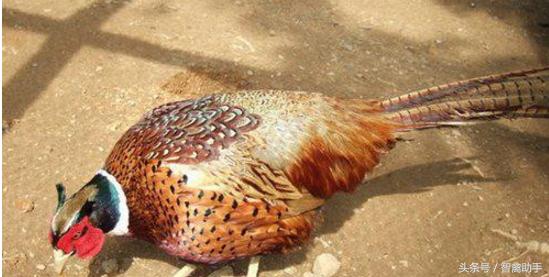
Hatching eggs:
Eggs must be sterilized before they are hatched. After washing the eggs in 0.5% potassium permanganate solution, remove them to dry and put them into an incubator to hatch. But before hatching, the eggs should be preheated in a room of 20 ℃-24 ℃ for 4-6 hours. Temperature and humidity should be strictly controlled in the process of hatching. The temperature in the first 7 days is 37 ℃-38 ℃, the air relative humidity is 55% ℃ 60%, the temperature in the middle 10 days is 37 ℃-37.5 ℃, the air relative humidity is the same as in the previous period, and the temperature in the last 4 days is 37 ℃, the relative temperature is 75%. The chicks were fed with penicillin to wash the stomach and intestines 1 hour after coming out of the shell, containing 800 units of penicillin per milliliter.
Brooding management:
Temperature, light, density: the brooding temperature should gradually decrease with the increase of age. It was 35 ℃-34 ℃ at the age of 1-3 days and decreased by 0.5 ℃ per day at the age of 4-10 days. From 11 to 28 days old, it decreased to 28 ℃ at room temperature. 1-3 days old day and night to give light, every 7 square meters with a 25W light bulb, until 30 days old, but to gradually reduce the exposure, and then can use natural light. The feeding density was 50-60 per square meter at the age of 1-10 days and 20 at the age of 11-30 days, and then adjusted with the increase of age.
Start eating:
After the chicks have just shelled and dried, they must be caught in the nursery or incubator for breeding. Although the chicks at this time have the action of pecking, they will not recognize the material if they peck correctly. In order to induce chicks to recognize food, they can tear red and green paper into pieces and put them in a glass bottle, put the bottle in the middle of the feeding plate, and sprinkle food around the bottle. When the chicks see the dazzling things in the bottle, some will run and peck. When you accidentally peck at the food on the plate, you will swallow it. As long as a few start, the whole flock of chicks will approach the plate to emulate, and after 2-3 days of induction, they will find their own food to eat. They were fed 6-7 times a day at 1-20 days old, 5-6 times at 21-30 days old, and 4-5 times at 31-60 days old. Feed less frequently when feeding, and keep the food on the plate clean and hygienic.
Brooding methods:
1. Hot Kang brooding: a hot Kang can be set up according to environmental conditions, surrounded by nylon net as a fence. The mesh is to the extent that chicks cannot be drilled out. 16 cm away from the Kang surface to spread barbed wire, with 0.5 cm mesh is better. This method of raising chicks can prevent chicks from coming into contact with feces and prevent coccidiosis and other diseases. two。 Carton net fence brooding: the chicks can be raised in the packaging carton above the hot Kang, but pay attention to control the temperature. Chicks can be kept in a fence when they can run to prevent them from escaping. 3. Plane brooding: pad a layer of short grass on the plane, but pay attention to update, always keep the air fresh and clean. Use heating or underground fire pipes to keep warm.
Chick diet match:
At the age of 1-20 days, 60% of cooked eggs, 13.5% of corn flour, 16% of fried soybean powder, 3% of bran, 1% of bone meal, 0.5% of salt, 2% of yeast powder, 3.5% of poultry auxin, 0.5% of poultry multivitamins, and the right amount of chopped green vegetable leaves. This formula is equivalent to the nutrition of natural live food.
Chinese chicken rearing:
Generally, 3-4-month-old chickens are medium-sized chickens. During this period, feed should be matched well to promote the rapid growth and development of buried people. Newcastle disease Ⅰ vaccine should be injected at the age of 90-120 days. Because pheasants are very sensitive to drugs, the dosage is slightly less than that of domestic chickens to prevent side effects. There is a shade shed in the net room to protect against rain and hot sun.
Outdoor fence breeding:
The fence is 2.5 meters high. The arched fence is made of 2 × 2 cm or mesh nylon or barbed wire. The width of the chicken coop or fence should be determined according to the amount of feed. The site should choose a ventilated and dry place that can protect against cold and wind, and it is better to have shade around it. Shade is needed on the net shed to prevent heat when the temperature is high. Food trough and drinking fountain are arranged in the net column. Breeders should wear plain clothes when they come to the fence, and must not wear bright red and green flowers, because pheasants will panic when they see them. A 0.5-meter-high and 0.4-meter-wide habitat should be set around the fence for pheasants to rest and soft grass for chickens to live at night. Males and females should be cultivated separately and raised in the same column when spawning.
Matching of Chinese chicken diet:
1.30-60 days old, cooked fish 50%, corn meal 20%, cooked soybean meal 14%, bran 8.5%, bone meal 2%, salt 0.5%, yeast powder 2%, poultry auxin 2.5%, poultry multivitamins 0.5% 2.60-120-day-old use 5% cooked pork, 15% cooked fish, 38% corn meal, 14% bean cake meal, 4% fish meal, 2% yeast powder, 3% bone meal, 15% green vegetable leaves, 0.5% salt, 0.5% multivitamins for poultry. With the above two formulations, the chickens grew well, gained weight quickly and got out of the column early. If the ingredients are inconvenient in feeding, you can refer to the formula of domestic chickens and match them according to proportion.
The colorful pheasant gets its name because of its colorful fur. Pheasant meat is delicious and nutritious, which contains a variety of essential amino acids and trace elements such as calcium, sodium, sulfur and so on. Pheasant bile, blood and internal gold can be made into medical preparations, which have high nourishing, medicinal, health care and cosmetic value. Male pheasant feathers can be made into feather handicrafts, can also be woven into satin, brocade to make dresses, chicken skin can be made into a variety of exquisite leather goods. Pheasant eating miscellaneous: can be fed with rice bran, wheat bran, a variety of vegetables, rice, sorghum, corn, maggots and so on, similar to domestic chickens.
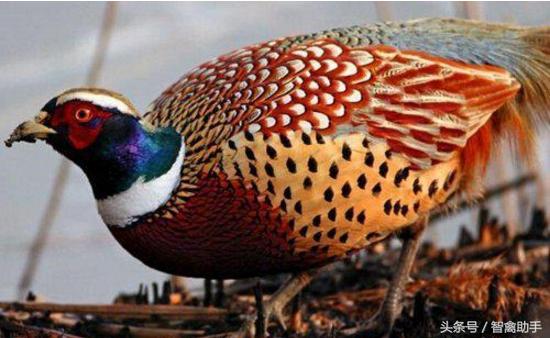
Strong adaptability: pheasant is resistant to high temperature and cold. The feeding benefit of pheasant is better, but there are more and more farmers. Therefore, in order to make ourselves in an invincible position, we should improve the quality, reduce the cost and open a wide range of sales channels. The culture techniques of colorful pheasants are as follows: first, chicken culture techniques.
1. Timely drinking and eating: the young pheasant begins to eat 24 hours and 36 hours after it comes out of its shell. Drink water before eating. It is best to add 5% glucose or 0.1% potassium permanganate to the drinking water. The young pheasants who do not know how to drink water should be trained in time to drink water as soon as possible. 1-2 hours after feeding. The opening food should be soft, palatable, nutritious and easy to digest. It is best to feed wet mixture in the first 3-5 days. Remove the leftovers before each feeding. The feeding was induced once every 2-3 hours, and then the interval was gradually increased. 6 times a day in 0-2 weeks and 5 times a day in 3-4 weeks. Generally, the feed intake increases with the increase of age, and the feed requirement tends to be stable when it grows close to the adult body weight.
2. Temperature and humidity regulation: the suitable temperature for brooding is: 1 35 ℃ at 3 days old, 33 ℃ at 4 days old, 31 ℃ at 2 weeks old, 27 ℃ at 3 weeks old, 2322 ℃ at 4 weeks old, and maintain normal temperature after 5 weeks old. The relative humidity is 65% to 70% at the age of 1-10 days, and 55% to 65% at the age of 11 days.
3. Density: with the change of age, its body weight and water consumption will also change accordingly, so the feeding density should be adjusted timely to increase the number of water and trough. When raising chicks in cage or box type, the density is: 10 days old 50 birds per square meter, 10 days old 30 birds per square meter, then they can be transferred to three-dimensional cages (4-layer cages for egg pheasant rearing chicks), 21 days old, 42 days old, 20 birds per square meter, 43 days old, 60 days old, 20 birds per square meter.
4. Ventilation and indoor environment control: poor indoor air circulation and excessive concentration of ammonia will directly affect the growth and development of pheasants and induce chronic respiratory diseases, eye diseases and other diseases. Should be regular ventilation, keep indoor air fresh, timely removal of feces, cleaning the floor, maintain a suitable temperature, regular disinfection with chickens, timely evacuation density. To improve the indoor environment is one of the important measures to improve the survival rate of young pheasants.
5. Light time control: the light requirement of the young pheasant is not too strict. The young pheasant keeps 24 hours of light for 3 days and 20 hours for 7 days. After that, it quickly turns to natural light according to the feeding condition of the young pheasants. When transferred to the three-dimensional cage before and after 3 weeks, full light should be added in the first night so that the young pheasants can adapt to the new environment as soon as possible, and it is appropriate to use 3 watts per square meter. After most of the pheasants eat and drink, they can use natural light.
6. Immunization: the immunization procedure should be worked out according to the situation in this field.
2. The technique of adult chicken breeding young pheasants can be transferred to the ground level or into the pheasant cage after being caged for 6 or 7 weeks.
The main results are as follows: 1. The time of transformation and problems needing attention: generally, the hatched chicks from the end of March to the middle of April are reared to 6-8 weeks of age, and the hatched pheasants in summer can be transferred to 5-6 weeks of age. 3 days before the transition, special personnel should be assigned to work the night shift and give 24-hour light. When changing groups, we should also pay attention to separate and raise the weak chicks, and eliminate the sick and disabled chicks in time.
2. Feed restriction of reserve pheasant: for the breeding pheasant reserved for breeding, in addition to the preliminary selection at the age of 6 to 8 weeks, the body weight must be controlled and overfertilized must be prevented to ensure a higher egg laying rate and fertilization rate during the breeding period. The specific measures are: reduce the content of protein and energy in the diet; increase the amount of crude fiber and green feed; reduce the number of feeding; increase the amount of exercise; limit the amount of feed and so on.
3. For the second time, the beak was broken and the pecking habit occurred: the pheasant was wild and liked to peck foreign bodies. In order to effectively prevent pecking, the beak can be cut off for the second time at the age of 5 to 10 weeks, the method is the same as that of domestic chickens.
4. Forbid moldy and deteriorated feed to prevent the occurrence of aspergillosis: pheasants in the early stage of breeding are susceptible to Aspergillus, and the morbidity and mortality of the disease are relatively high. therefore, attention should be paid to forbidding moldy and deteriorating feed and mouldy bedding in feeding and management. control the environment in the house, maintain the required humidity, often disinfect chickens with peracetic acid, and burn the ground and appliances with flamethrowers before turning groups to prevent the occurrence of the disease.
III. Breeding techniques
1. The establishment of pheasant group. The establishment of each pheasant group is generally selected more than twice: the first selection is carried out from October to November every year, and the reserve group is formed strictly according to the variety standard, growth and development, and health condition; the second selection is made from January to February of the following year, and the selection criteria: male pheasant feathers are plump and bright, the feathers are upright, the chest is wide and deep, the body is large, the physique is strong, and the male is strong. The female pheasant's body is upright and oval, its feathers are close, shiny, its tail is not on the ground, and its legs and eyes are not defective. If there are conditions, the third selection can be made at the end of February or the beginning of March to eliminate the individuals who do not conform to the characteristics of the breed or the male is not strong, the mental state is not good, and the female pheasant does not blush or mop the ground at the beginning of March. At this point, the species of pheasant can be determined after 2 or 3 times of selection and elimination.
2. Breeding techniques of pheasants.
① release month and utilization life: under good artificial domestication conditions, the general male pheasant reached sexual maturity at the age of 9 ~ 10 months, while the female pheasant reached sexual maturity at the age of 10 ~ 11 months. If it has come to the breeding season, timely release can be considered, generally around mid-March in northern China and early February in southern China. Domestic pheasants in production farms are generally changed once a year, but the death rate of pheasants of the same species in the second year is significantly lower than that in the first utilization life. The fertilization rate of egg production did not change much.
② pheasant group size and male-female ratio: the pheasant population should not be too large in breeding season, generally 100,150 pheasants are a group, and there is a barrier between groups to block the line of sight, so as not to affect mating. At the level of general nutrition and management, the ratio of male to female can be determined at 1:4, when the fertilization rate can reach more than 85%, and if the level of feed nutrition and management is high, the number of male pheasant and female pheasant can be appropriately increased, and the ratio can be changed to 1 lug 5 × 1 vig 6.
③ timely release and matching: the determination of release time must take into account factors such as air temperature, breeding season and nutrition level. The growth and development of pheasants can be slightly improved, while the poor development of species pheasants can be postponed. The timing of mating can also be determined by the trial method, which is to first put 1 or 2 male pheasants into the female pheasant group to observe whether the female pheasant is willing to "mate" or not. Practice has proved that the release time should be controlled by the singing, red face or nesting behavior of the mother pheasant. Early release not only affects the survival rate of the juvenile group, but also promotes the premature senescence of the male pheasant and affects the fertilization rate of breeding eggs in the later stage, which will lead to the waste of breeding eggs.
④ protects the "prince pheasant" and sets up a barrier: after several days of struggle, the male pheasant enters the female pheasant group and produces the "prince pheasant". The "prince pheasant" has the priority to mate among the female pheasants. After arranging the order of the male pheasants, they are not allowed to enter the new male pheasants at will, so as to maintain the status of "prince pheasants", reduce physical exertion and stabilize the pheasants. However, the "prince pheasant" has the characteristic of not allowing other male pheasants to copulate, so barriers should be set up in the net or on the sports ground, and 3 to 4 plastic tiles, or piles of branches, or rockery stones can be placed every 100 square meters, so as to improve the laying rate and fertilization rate.
In general, adult pheasants are divided into two stages: breeding period and non-production period, and different management is adopted.
Pheasants entering the breeding period of ① require rich nutrition, especially adequate supply of animal protein feed. After the beginning of egg laying, with the increase of egg production, the protein content gradually increases, and the crude protein content in feed during the peak laying period can reach 18%-20%. While the protein content increases, attention should also be paid to appropriately increasing the contents of various vitamins and trace elements.
Because of short domestication time and strong wildness, both male and female pheasants have the bad habit of pecking eggs, while female pheasants have the characteristics of irregular egg-laying place and high egg-breaking rate, so eggs should be collected frequently. All broken or leftover eggshells should be cleaned out of the circle in time to prevent the spread of egg-pecking addiction.
③ to maintain good and stable environmental conditions, to achieve the "three fixed" that is to determine people, timing, set management procedures. The movement in and out of the pheasant house should be light, and the net room should be inspected and repaired frequently to prevent wild animals from frightening and harassing the pheasant flock; in summer, a shed should be built or plants such as towel gourd and beans with climbing vines should be planted next to the net room for shade, so as to avoid direct sunlight and ensure the normal sexual activities and mating times of breeding pheasants.
The laying time of ④ pheasants is mostly from 10:00 to 3 p.m. every day, accounting for 86.7% of the total number of eggs laid in the whole day, and the duration of each egg for normal laying is 0.5 minutes. The breeding staff should pay attention to the dynamics of pheasant flocks and assist in delivery in time when they find dystocia. The method is: first drop lubricant and glycerin into the cloaca, then fix both sides of the egg with the left hand, press the abdomen with the right hand and push forward to help take out the egg, the action should be light, this work needs two people to complete. As the cloacal cavity of the newborn mother pheasant carries blood, other pheasants will peck the anus when they see red, so it is necessary to observe the pheasants at any time and take timely measures to apply purple potion or black ink to the bleeding area, or to keep them in isolation.
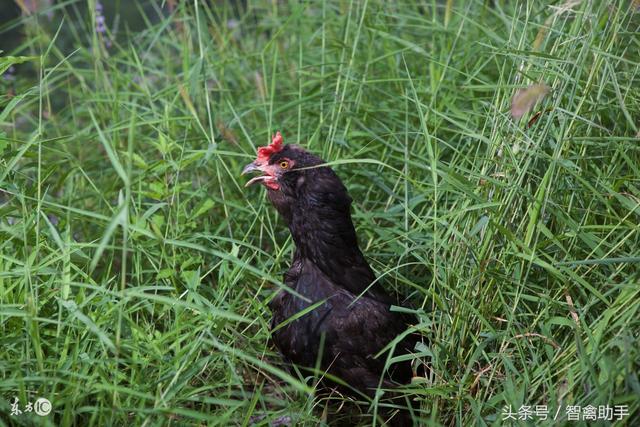
- Prev
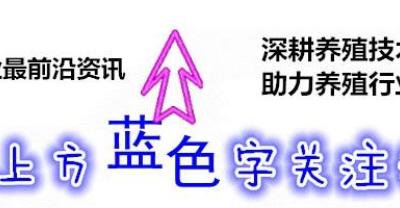
The breeding methods and matters needing attention of succulent monosodium lucidum, and the pruning method of the breeding method of succulent monosodium lucidum
- Next
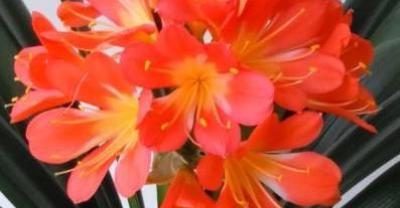
Culture methods and matters needing attention of cinnabar root
Cinnabar root is a variety of purple Taurus, distributed in the middle and lower reaches of the Yangtze River, South China, Taiwan, Japan, Ryukyu and Java of Chinese mainland.
Related
- On the eggshell is a badge full of pride. British Poultry Egg Market and Consumer observation
- British study: 72% of Britons are willing to buy native eggs raised by insects
- Guidelines for friendly egg production revised the increase of space in chicken sheds can not be forced to change feathers and lay eggs.
- Risk of delay in customs clearance Australia suspends lobster exports to China
- Pig semen-the Vector of virus Transmission (4)
- Pig semen-the Vector of virus Transmission (3)
- Five common causes of difficult control of classical swine fever in clinic and their countermeasures
- Foot-and-mouth disease is the most effective way to prevent it!
- PED is the number one killer of piglets and has to be guarded against in autumn and winter.
- What is "yellow fat pig"? Have you ever heard the pig collector talk about "yellow fat pig"?

